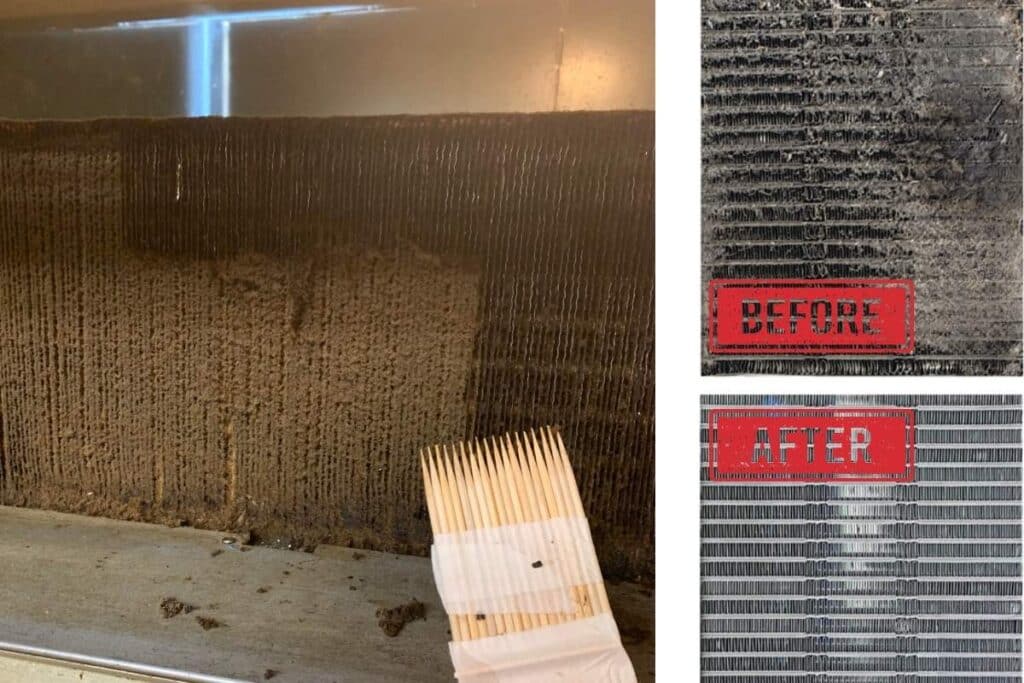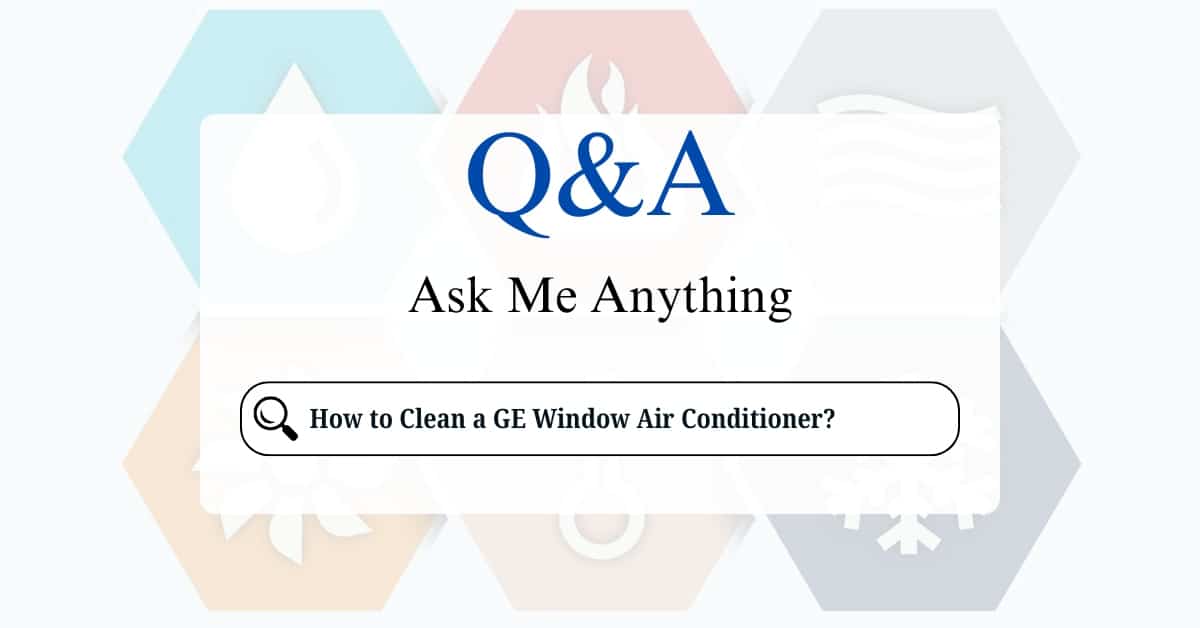Regular cleaning of your GE window air conditioner is essential to maintain efficiency, ensure good air quality, and extend lifespan. Here’s a step-by-step guide to cleaning your unit effectively.
1. Turn Off and Unplug the Unit
- Turn off the air conditioner using the control panel or remote.
- Unplug it from the power source to ensure safety while cleaning.
You don’t necessarily have to take it out of the window unless you want to! If it’s in a second-story window or accessing the outside is tricky, you might find it easier to remove it. This way, you can thoroughly clean the back and comb the fins. Plus, taking it out lets you see if it might need repairs or a replacement.
2. Remove and Clean the Air Filter
- Open the front grille to access the air filter.
- Carefully remove the filter.
- Rinse the filter under warm running water to remove dust and debris. For heavy dirt buildup, use a mild detergent and a soft brush.
- Let the filter dry completely before reinstalling.
- If the filter is disposable or damaged, replace it with a new one recommended by GE.
Some filters are reusable; others need replacing every 3-6 months. Check your manual or search online for your filter type. Clean reusable filters monthly to remove dirt and allergens, or replace them as needed to maintain efficiency and prevent damage to your AC.
3. Clean the Front Grille and Exterior
- Wipe down the front grille and the unit’s exterior with a soft cloth dampened with mild detergent and water.
- Avoid using abrasive cleaners, as they can damage the surface.
- Pay special attention to vents or louvers to ensure proper airflow.
Use detergent, soap, or hydrogen peroxide to clean the outer surfaces of your window AC. Spray onto a cloth or paper towel instead of the device to avoid oversaturation. After wiping, detach the outer cover by removing hooks or screws, as most window units require.
4. Inspect and Clean the Coils
The compressor fins on the back of a window AC help release heat. Straighten and clean them to improve efficiency using a fin comb or a damp cloth. Be cautious, as the fins are sharp.
- Locate the Coils:
- The evaporator coils are inside the unit (behind the filter).
- The condenser coils are on the back of the unit (outside).
- Use a soft brush or vacuum with a brush attachment to gently remove dust and debris from the coils.
- If necessary, spray a coil cleaner (designed for AC units) onto the coils and let it sit for the recommended time before rinsing with water.
- Be careful not to bend the delicate fins. Use a fin comb if the fins are bent.

5. Check and Clear the Drainage System
- Locate the drain holes at the bottom of the unit.
- Remove any clogs by using a small brush, pipe cleaner, or compressed air.
- Make sure water flows freely to prevent mold and water buildup inside the unit.
6. Clean the Fan and Interior (Optional)
- If you can access the fan blades, use a damp cloth to wipe off dust and dirt.
- Be cautious to avoid dislodging any components.
Use an extension hose to vacuum dust and debris around the filter area, including edges and behind the filter, to ensure thorough cleaning. Be gentle to avoid damaging components. For heavy dirt buildup, use a fresh cloth to wipe down the area for better results.
7. Reassemble and Test the Unit
- Once all components are dry, reinstall the air filter and close the front grille.
- Plug the air conditioner back in and turn it on.
- Monitor the unit to ensure it is operating smoothly and efficiently.
If you cleaned your GE window AC unit due to issues like a moldy or mildew odor or poor performance, test its functionality after restarting. Check for improved airflow, reduced odors, and overall efficiency to ensure the cleaning resolved the problem.
When to Clean Your GE Window Air Conditioner
- Every 3 months during heavy use (e.g., summer months).
- Before storing the unit for the season or reinstalling it.
- If you notice reduced airflow, unpleasant odors, or visible dust buildup.
Why Cleaning is Important
- Improves cooling efficiency and reduces energy consumption.
- Prevents mold, mildew, and allergens from accumulating inside the unit.
- Extends the lifespan of the air conditioner by reducing wear and tear.
When to Call a Professional
- If there is persistent mold or mildew inside the unit.
- If the coils are heavily soiled and cannot be cleaned properly with household tools.
- If the unit leaks water excessively or shows signs of mechanical issues.
By following these steps, you can keep your GE window air conditioner clean and running efficiently, ensuring a comfortable and healthy environment in your home.






